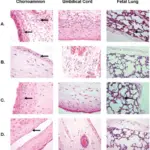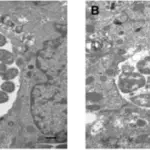Trichomonas vaginallis is an anaerobic, flagellated protozoan parasite and the causative agent of trichomoniasis.
What is the Pathology of Trichomonas Vaginallis?
The pathology of trichomonas vaginallis is:
-Etiology: The cause of trichomonas vaginallis is one-celled protozoan.
-Genes involved: None.
-Pathogenesis: The sequence of events that lead to trichomonas vaginallis are: upon contact it destroys epithelial cells by the release of cytotoxic substances. It also binds to host plasma proteins, thereby preventing recognition of the parasite by the alternative complement pathway and host proteinases.
-Morphology: The morphology associated with trichomonas vaginallis shows pear shaped organisms that are cyanophilic.
-Histology: The histology associated with trichomonas vaginallis shows presence of eosinophilic cytoplasmic granules.
How does Trichomonas Vaginallis Present?
Patients with trichomonas vaginallis typically are females at the age range of 15 to 35 years. The symptoms, features, and clinical findings associated with trichomonas vaginallis include genital redness, frequent urge to urinate, vaginal discharge, vaginal spotting or bleeding, pain during urination or sexual intercourse.
How is Trichomonas Vaginallis Diagnosed?
Trichomonas vaginallis is diagnosed by swab test, urine test, and nucleic acid amplification test.
How is Trichomonas Vaginallis Treated?
Trichomonas vaginallis is treated by antibiotics such as metronidazole or tinidazole.
What is the Prognosis of Trichomonas Vaginallis?
The prognosis of trichomonas vaginallis is good.



